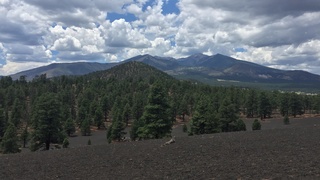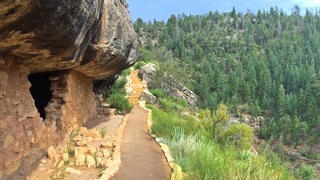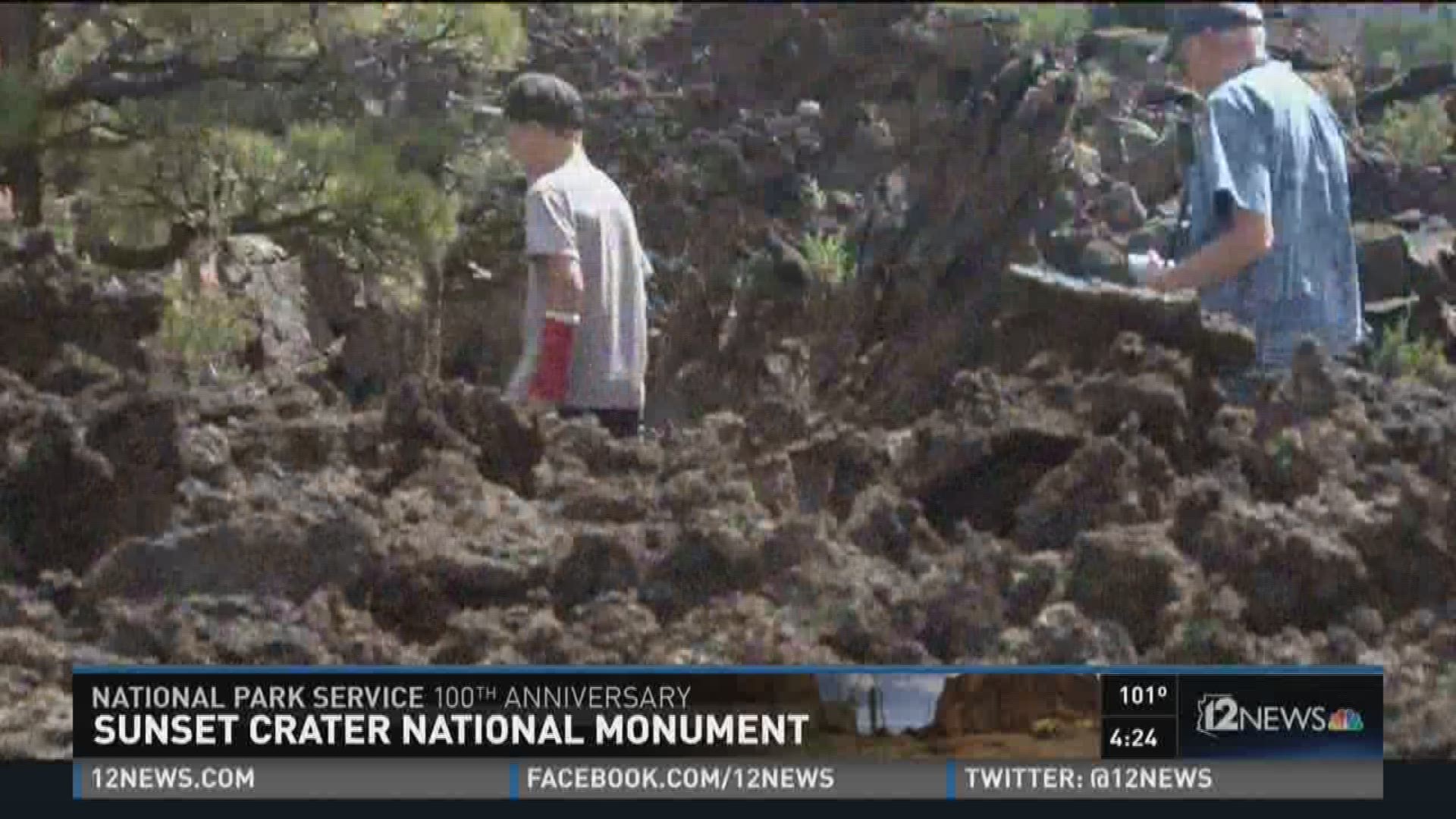Sunset Crater National Monument, along with many other national parks are hosting events celebrating the National Parks Service's centennial. For more information about these events, visit the National Parks website.
There are hundreds of volcanoes across Arizona, but one in particular is worth a visit. Sunset Crater is located to the northeast of Flagstaff and considered a volcanic infant.
“[Sunset Crater] is the youngest of the roughly 600 volcanoes in a 40-mile radius of Flagstaff," said Steven Rossi of the National Parks Service. "Every mound you see is some type of volcanic feature. Without volcanic activity this area would be flat."
This particular volcano is called a cinder cone volcano and is made of tiny cinders. Rossi compares it to an ant hill, as they have a small depression at the top and are composed of small fragments of rock. Even though Sunset Crater is made of small rock fragments, it is still 1,000 feet in elevation.

When Sunset Crater erupted, it is estimated that the fountain of lava was over 800 feet high. This particular eruption also produced a lava flow that you can explore on your visit.
“There was still magma that wanted to come out and magma shot out the side and created this lava flow called the Bonito Lava Flow, and it’s pretty extensive,” Rossi said.
While climbing to the top of Sunset Crater has not been allowed since the 1970s due to damage being done, you can explore the base of the volcano and walk portions of the lava flows.

You can also climb Lenox Crater, which is just west of Sunset Crater and offers great views of the surrounding landscape. Lenox Crater is also a cinder cone volcano and as you hike 250 feet up the side, you can get a true idea of the incredible power behind these volcanoes.
Since there are multiple volcanoes around the area, many may wonder, why Sunset Crater was made a National Monument. The main reason for its creation was the movie industry.
“There was a film that wanted to be filmed here at Sunset Crater and they wanted to dynamite sides of Sunset Crater or damage to the crater," Rossi said. "People in the city of Flagstaff at that time said 'Whoa, hold on,' and they petitioned the president to use that executive authority to declare this a national monument in 1930."

The big question on the minds of many: Could there be another eruption?
“When you take all these volcanoes and you average them, a new one forms every thousand years," Rossi said. "And, well, it’s been about a thousand years, give or take another 20 to 30 years. It will be exactly a thousand years. And so, who knows -- might just happen.”
If an eruption occurred again, it would no doubt be an incredible sight for everyone living in the area, and past eruptions may have even caused populations to shift.

Scientist have found hints that Walnut Canyon and Wupatiki may have seen human development shortly after the eruption of Sunset Crater.
“Sunset crater might have been a push factor for pushing people out to those areas," Rossi said, "because it is kind of on the edge of where the cinder fell and kind of the edge of the volcano."
They also found that people were likely living at the base of Sunset Crater at the time of the eruption.
“We have evidence that people were living in and around Sunset Crater because underneath the lava flow are pit houses and such,” Rossi said.

So as you visit this National Monument, just think of how these volcanoes have not only changed the landscape, but have altered the course of civilization.
If you want to visit Sunset Crater National Monument, it only costs $20 per vehicle and the pass is valid for seven days.

